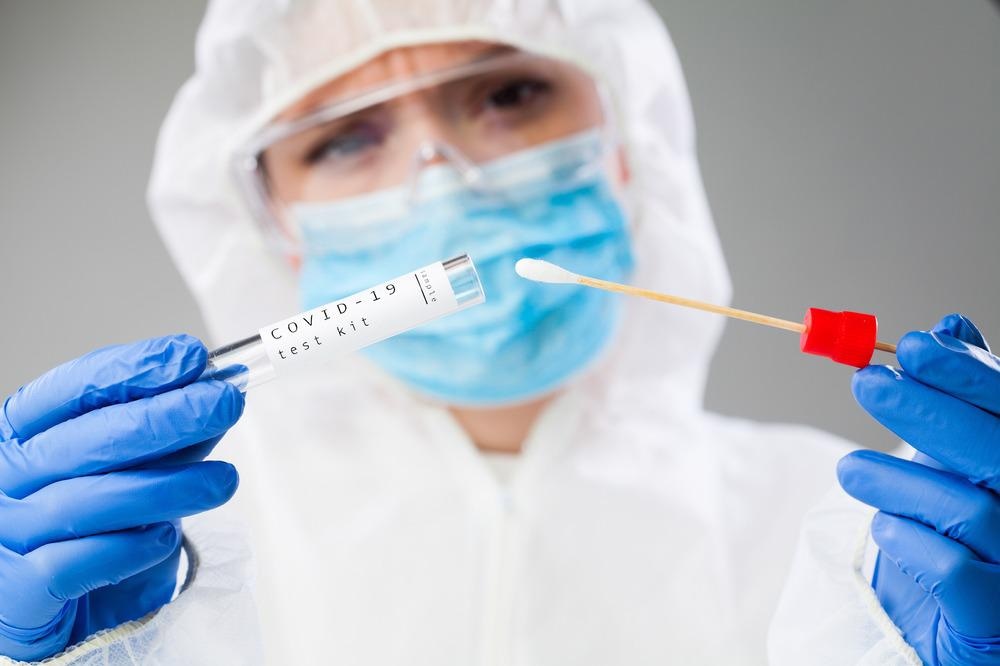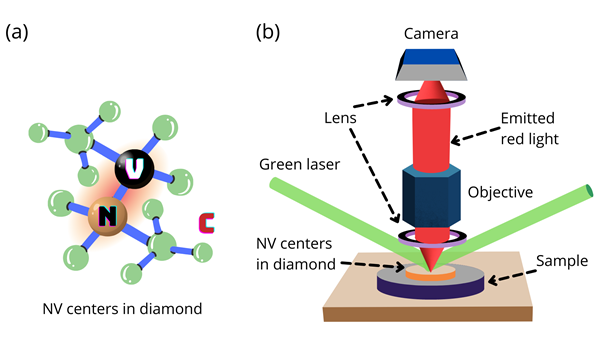A Covid-19 testing technique based on quantum technology may provide faster and more accurate results than current testing methods.

Image Credit: Cryptographer/Shutterstock.com
Expedited development of testing technologies for the Covid-19 virus has been ramped up since the pandemic began. The virus that causes Covid is called the SARS-CoV-2 virus. Polymerase chain reaction (PCR) tests are regarded as the most accurate testing tool currently available.
While the PCR test accomplishes the objective of detecting Covid, there are several drawbacks. The PCR test can take up to several hours or days to provide the results after a test is administered. The PCR tests are also reported to have up to 25% false-negative results. To circumvent these limitations, scientists have explored innovative methods based on optical physics and quantum mechanics. These techniques promise to offer Covid testing capabilities with higher precision within a few seconds of testing. The newest research is published in the journal Nano Letters.
New Methods for Covid Testing
One idea that is being investigated uses optical diffraction methods. The goal of this approach is to shine laser light on blood cells and analyze the diffracted beams to infer whether the cells are infected. The chemical make-up of the cells would be altered if they are infected. The diffracted laser beam is expected to detect this difference under optimal experimental conditions.
Another Covid-19 detection mechanism that is being developed is based on quantum technology. Nitrogen vacancy (NV) centers in diamond have been established over the last decade as a highly sensitive quantum sensing platform. Theoretical simulations performed by researchers at MIT have shown that NV centers in diamond can be adapted to detect the Covid virus. Proof-of-concept experimental efforts are underway to verify the validity of this technique.
NV Centers in Diamond
NV center is a structural defect in the molecular composition of diamond.
Introducing this defect within diamond makes it an optically active system that can absorb and emit light. This photoluminescence property of NV centers has been exploited to probe many different applications.
The molecular structure of diamond is composed of carbon atoms arranged in a crystal pattern. Defects within that structure can be fabricated using various experimental techniques. By introducing nitrogen atoms into the molecular bonds and removing carbon atoms, NV centers can be synthesized. An illustration of how an NV center in diamond lattice structure might look is shown in Figure 1(a).

Figure 1: (a) Illustration of how an NV center in diamond lattice structure might look. (b) A typical experimental set-up using NV centers in diamond for sensing. Image Credit: Ilamaran Sivarajah
NV centers behave like a two-level atom with exceptional optical properties. A multitude of established experimental techniques are used to manipulate the internal quantum states of the NV centers. They can be controlled by applying a magnetic field, electric field, microwave radiation, or light. The crystal defects are extremely sensitive to minute perturbations which makes them ideal high sensitivity probes.
The molecular structure of NV centers also makes them well shielded from environmental disturbances. This ability to withstand external noise increases the coherence time of their quantum states. Most technology-based on quantum mechanics works at ultra-cold temperatures near absolute zero.
But the capacity to isolate NV centers from environmental interference means that they can be operated at room temperatures. This is another major advantage to develop devices with NV centers.
Using NV Centers in Diamond as a Detector
One experimental method employed using NV centers is shown in figure 1(b). A green laser is used to excite the NV centers. The system absorbs the green photon and emits red light. The red photons are collected through the microscope objective as shown in figure 1b. The NV center is kept in contact with the sample studied.
Depending on the property of the sample that is relevant for a given experiment some control parameters can be applied. For example, a controlled magnetic field or microwave radiation can be introduced. When very sensitive perturbations are detected by the internal quantum states of the NV centers the emitted red light will have shifted in frequency and or other physical variables.
For example, sharp resonances in the intensity and wavelength of the photoluminescence can be detected. Using the collected information, a quick analysis is used to map out the behavior of the sample.
The amount of Nitrogen atoms implanted within the Diamond lattice is controlled during fabrication. Depending on the application, the density of Nv centers can vary from a single one to hundreds or more. The diamond flakes that are used to implant the Nitrogen atoms are nanodiamonds to a few micrometers in size and are relatively cheap to obtain.
Adapting NV Centers for Covid Testing
NV centers in diamond can be adapted to detect the Covid virus. A modification is implemented by coating the nanodiamonds with a specific magnetic material. This particular material has been developed such that it bonds only with the specific RNA sequence of the Covid virus. Variations in the magnetic field are detected when the virus RNA is present in the sample, and it bonds with the coated magnetic material.
The Covid sensor developed at MIT with NV centers uses low-cost materials. Apart from the small diamond flakes, the lasers used for excitation are cheap green laser pointers. The camera used for detection is an off-the-shelf, widely available, scientific camera. Common, established chemical processes are employed to coat the RNA-tuned organic molecules.
Future Implications
NV centers based Covid tests are expected to return accurate results within minutes. Even if the proof of concept experiments reveal their accuracies to be comparable to the PCR test, NV centers have the advantage of being much faster. This technique can also be adjusted to test for any virus. By modifying the compounds that are attached to the sensor, this technology can be adapted to test for any variant of the Covid virus or any other form of the virus.
References and Further Reading
Changhao Li, Rouhollah Soleyman, Mohammad Kohandel, and Paola Cappellaro, SARS-CoV-2 Quantum Sensor Based on Nitrogen-Vacancy Centers in Diamond, Nano Letters Article ASAP DOI: 10.1021/acs.nanolett.1c02868
Glenn, D., Bucher, D., Lee, J. et al. High-resolution magnetic resonance spectroscopy using a solid-state spin sensor. Nature 555, 351–354 (2018). https://doi.org/10.1038/nature25781
Bhaya, B (2020, May 22). UAE-based quantum physicists develop rapid COVID-19 laser test. CGTN - Technology. https://news.cgtn.com/news/2020-05-22/UAE-based-quantum-physicists-develop-rapid-COVID-19-laser-test-QH65M4h2kE/index.html
Disclaimer: The views expressed here are those of the author expressed in their private capacity and do not necessarily represent the views of AZoM.com Limited T/A AZoNetwork the owner and operator of this website. This disclaimer forms part of the Terms and conditions of use of this website.